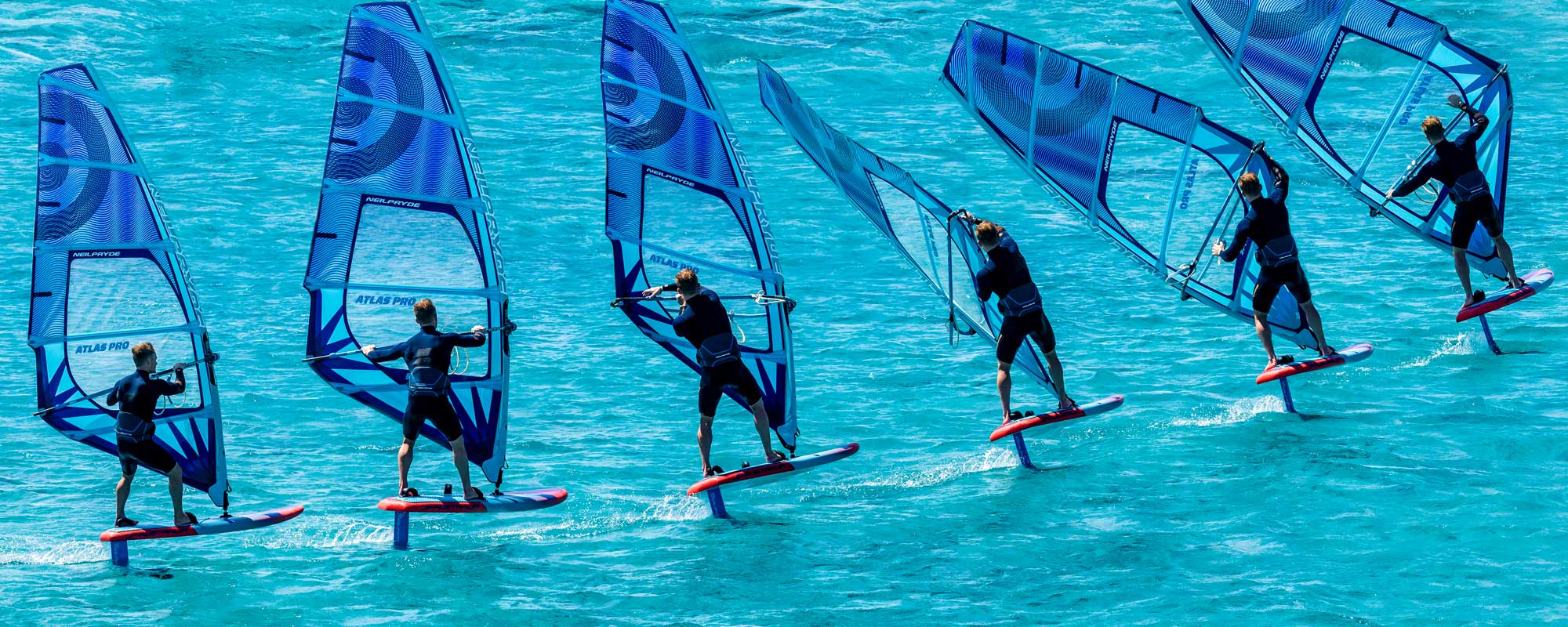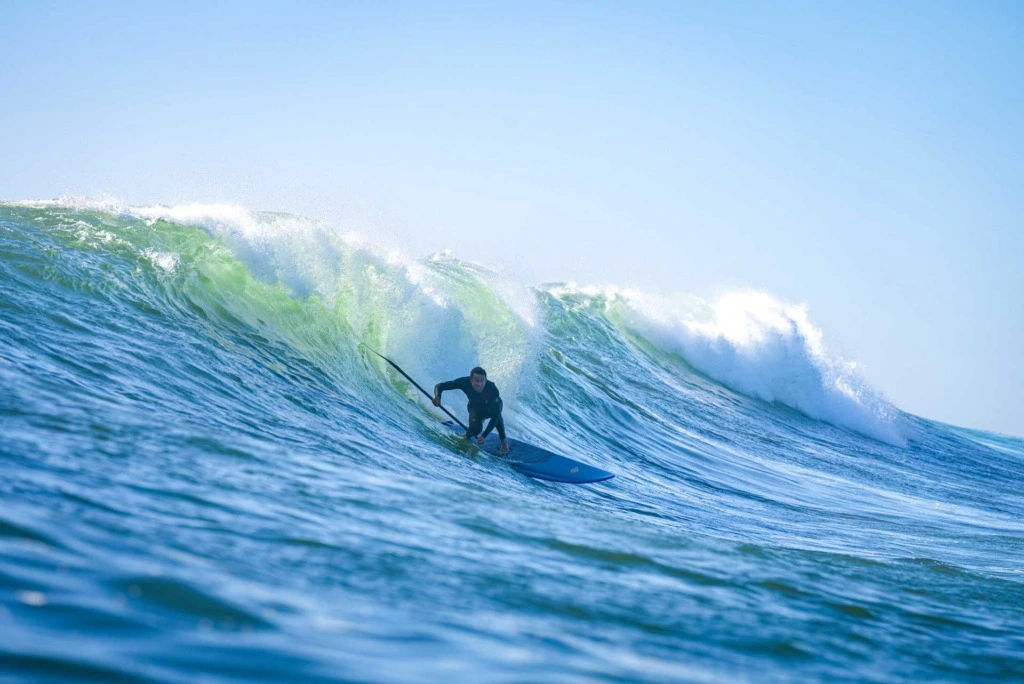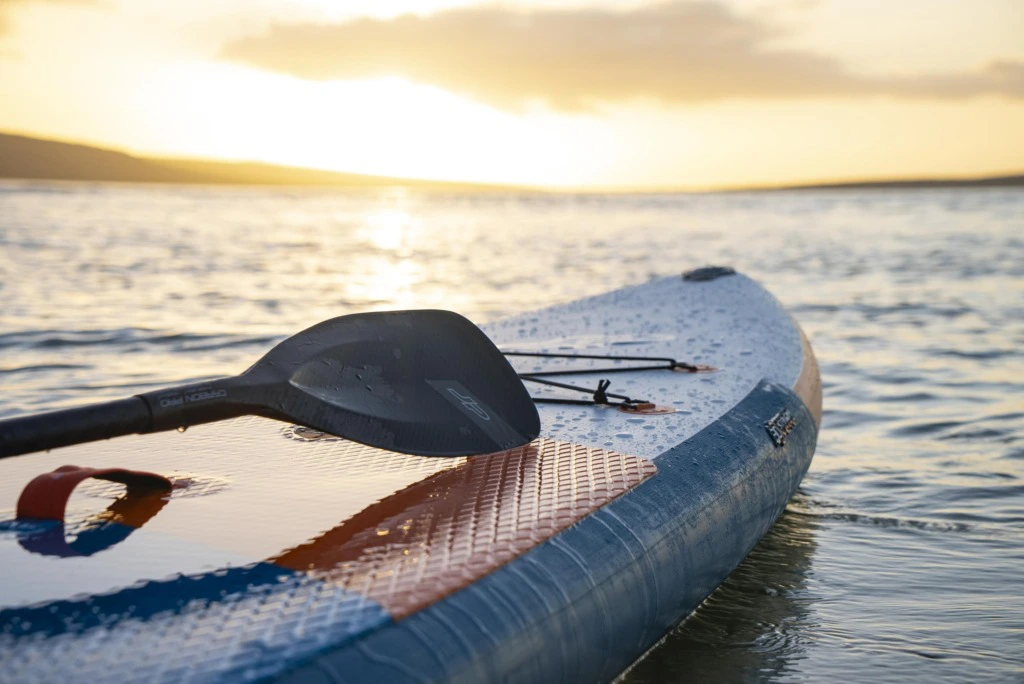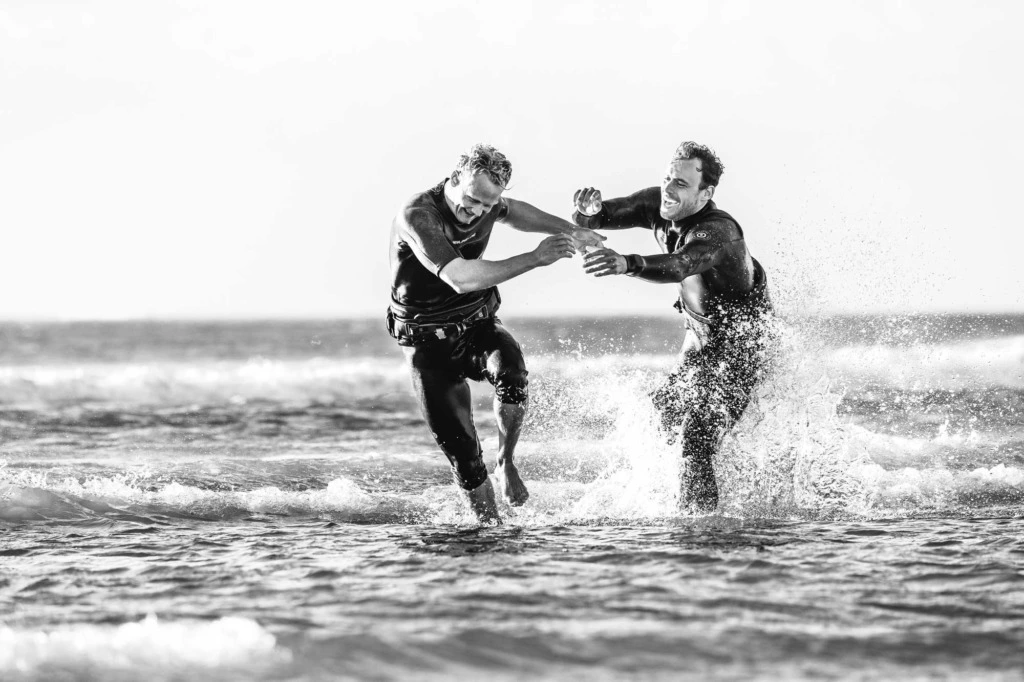Keep your legs bent and the centre of gravity low and continue to apply pressure on the rail.
Mind the position of the foot which is not in the strap as it has to level out the board – it may be a bit further back than on a normal jibe to keep flying. Move your feet like in a normal jibe as soon as you sail on the new beam reach, placing the new front foot directly in the strap.

First of all, bear off to gain speed. Take your back foot out of the strap early! Place it on the leeward rail to carve downwind.
Once on a broad reach, the pressure in the sail will release: The less pressure, the easier it will be to duck the sail.
Start the handwork by reach far back with your rear hand first! This wide grip on the boom is the prerequisite to reach the boom end with your front hand later.
Duck the sail earlier than you would do on a normal duck jibe. Cross hands and gab all the way back to the tail end of the boom. Throw the sail. Due to low pressure in the sail at this point, it will be easy to throw the sail and it will swing to the new side more naturally – it also will not affect the stability on the foil and you‘ll maintain your firm stance on the board.
Throwing the sail with the hand at the boom end makes it is easier to grab the boom further forward on the new side! Reach far forward and grab the boom with both hands.








